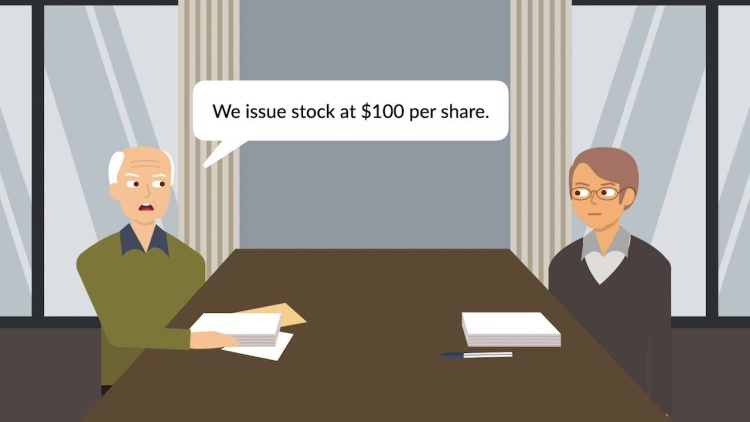Katzowitz v. Sidler
Court of Appeals of New York
24 N.Y.2d 512, 301 N.Y.S.2d 470, 249 N.E.2d 359 (1969)
- Written by Mary Pfotenhauer, JD
Facts
Katzowitz (plaintiff) and Sidler and Lasker (defendants) are the stockholders, and make up the board of directors, for Sulburn Holding Corp. The three invested equal amounts of capital in the corporation, and each were issued equal numbers of shares in the corporation’s capital stock. In 1961 Sulburn owed each of the three stockholders $2,500. Instead of collecting this debt, Sidler and Lasker wanted to loan it to another of their corporations. At a board of directors meeting, Sidler and Lasker proposed issuing some of the remaining capital stock to the directors at $100 per share in lieu of the $2,500 owed to each of them. Katzowitz disagreed, and the corporation decided to pay $2,500 to each director. Sidler and Lasker then called a special meeting, which only they attended, where they agreed to issue 75 shares of the corporation’s remaining stock at $100 per share, which was 1/18th the book value of the stock. The three shareholders were mailed notice that they had a right to purchase 25 shares at $100 per share. Katzowitz received this notice at the same time he received a check for the $2,500 owed to him. Katzowitz did not exercise his right to buy the additional 25 shares. Sidler and Lasker each purchased 25 shares. Sulburn then dissolved. Sidler and Lasker received $18,885.52 of Sulburn’s assets, and Katzowitz received $3,147.59. Katzowitz brought suit to recover an equal interest in Sulburn’s assets, less the $5,000 that Sidler and Lasker paid for their additional shares. The trial court found that Katzowitz had failed to exercise his preemptive right, and waived his right to purchase the new stock or object to its sale to Sidler and Lasker. The appellate court affirmed, finding that a disparity between the book value and the offering price for shares of stock is not in itself sufficient to prove fraud.
Rule of Law
Issue
Holding and Reasoning (Keating, J.)
What to do next…
Here's why 899,000 law students have relied on our case briefs:
- Written by law professors and practitioners, not other law students. 47,000 briefs, keyed to 994 casebooks. Top-notch customer support.
- The right amount of information, includes the facts, issues, rule of law, holding and reasoning, and any concurrences and dissents.
- Access in your classes, works on your mobile and tablet. Massive library of related video lessons and high quality multiple-choice questions.
- Easy to use, uniform format for every case brief. Written in plain English, not in legalese. Our briefs summarize and simplify; they don’t just repeat the court’s language.





